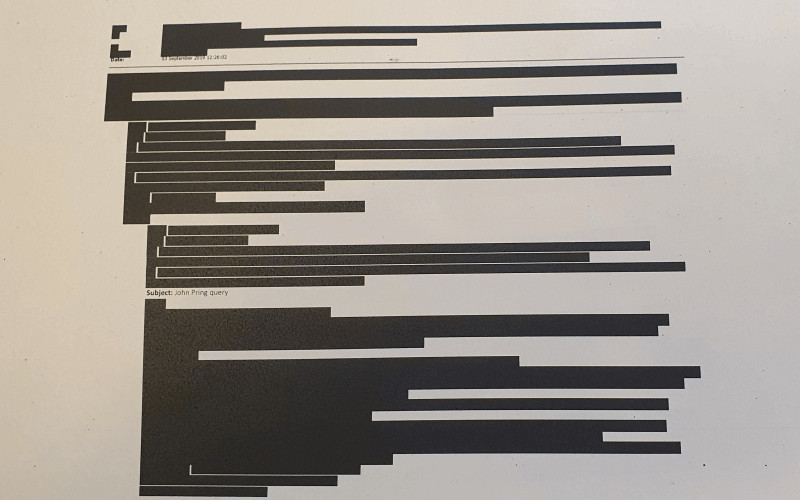Sign up for The Media Today, CJR’s daily newsletter.
In August 2017, Errol Graham, a disabled man designated by the British government as highly vulnerable, failed to turn up for a welfare assessment. Graham was a fifty-seven-year-old grandfather living in Nottingham, England. He had been a keen amateur soccer player in his younger years, but was now suffering mental distress and severe anxiety and had been getting a payment known as Employment and Support Allowance (ESA), for people whose disabilities make it hard for them to hold down work.
Britain, like many once-generous-now-struggling economies, tacitly uses bureaucracy as an impediment to public money. When Graham did not attend the appointment, and when two home visits did not work out, in October his welfare was cut off and Graham’s income disappeared. Eight months later, in June 2018, debt collectors arrived at Graham’s flat to evict him. He was behind on rent. They knocked down his door, and found his body. He had starved. His body weighed sixty-three pounds. The only thing in the kitchen were two tins of fish.
In January 2020 Graham’s daughter-in-law Alison Turner contacted a journalist named John Pring, the editor of the UK-based Disability News Service. This wasn’t the first time he’d heard a case as tragic as Graham’s. In fact, a month beforehand, Pring had published a twelve-thousand-word piece based on a five-year investigation into hundreds of deaths indirectly linked to a government test that determines if someone disabled can get welfare. To Pring, Graham’s story seemed to fit the pattern. As the coroner put it, “The safety net that should surround vulnerable people like [Graham] in our society had holes within it.”
After Disability News Service broke Graham’s story, on January 23, 2020, some other newsrooms, including The Guardian, the Mirror, and the BBC, picked it up. But most of Britain’s media did not report the story for weeks, or at all.
That surprised me and others who are concerned about what seems like a deadly and widespread phenomenon. Britain’s National Audit Office has linked the government’s assessment program for disabled claimants, albeit indirectly, to at least sixty-nine deaths. The fact that, in one of the world’s wealthiest economies, people are struggling to the extent that Graham was, while help is so readily withdrawn, seems shocking and newsworthy.
This April I visited Pring, fifty-four, at his apartment in Reading, near London, which is the entirety of the Disability News Service office. (His subscribers are mainly charitable organizations.) His desk was scattered with notebooks, dictaphones, documents, and a pack of pumpkin seeds. In his view there could even be a case for prosecution against senior government officials because serious flaws about the program had been raised as far back as 2012 and 2014.
The question was, what did government ministers know, and when? He made it his quest to obtain, using freedom of information laws, the internal review documents for each death. After a protracted legal battle for the documents, in April of this year it appeared he might finally get them.
For Pring, who is disabled himself, the relentless drumbeat of tragic stories has taken a toll. He has fought the government as a litigant in an Information Commissioner Office’s tribunal case, and was even placed on a blacklist in 2015. “I haven’t wanted to be part of the story,” he said. He sees himself solely as a reporter, not a commentator. But speaking to the families of the dead has pushed him on. “I’m stubborn. That’s my strength,” he said.
He’s also been mostly on his own. The Daily Telegraph and The Times did not cover the story until March 4 and April 8, respectively, according to the LexisNexis newspaper database. Tabloids like the Sun and Express appear never to have written about it.
“In some ways, the UK media has been directly involved in action by the state,” Frances Ryan, a journalist and the author of Crippled: Austerity and the Demonisation of Disabled People, told me. In her view they prepared the ground for welfare cuts over the past fifteen years with negative coverage of welfare recipients as undeserving freeloaders. “These papers weren’t just complicit in the ‘scrounger’ rhetoric—they were partners in it. I don’t think it’s hyperbole to suggest that caused real damage”.
Then Pring made progress. In March this year, the government withdrew its appeal against losing a freedom of information case and agreed to release a tranche of internal review documents into welfare deaths. Pring was frustrated—he’d spent time preparing for a potential tribunal hearing—but also relieved. Still, when he was sent the secret files, they were scrubbed of all personal information. Only the report recommendations were visible.
Is there a case for prosecution? “There was at the very least a case for a public inquiry,” Patrick Butler, The Guardian’s social policy editor, told me. The government had denied the internal reviews even existed, and wanted to “sweep it under the carpet.” “It’s a result of John’s reporting that this became an issue,” Butler said. His work caught the attention of a parliamentary subcommittee, which pushed for the 2020 National Audit Office report.
For Pring and Disability News Service, the investigation goes on. “It’s been about ten years’ obsessing on this one,” he told me. He’s now working on a book for Pluto Press. “I think one of the important things—as well as the big stories where he’s revealing injustice—he gives a voice to a community which doesn’t really have a voice at all,” Butler said. “And it can be an angry voice and a belligerent voice, but I think it’s quite an authentic voice, and it’s one that, if it wasn’t there, you’d really miss it.”
Has America ever needed a media defender more than now? Help us by joining CJR today.



